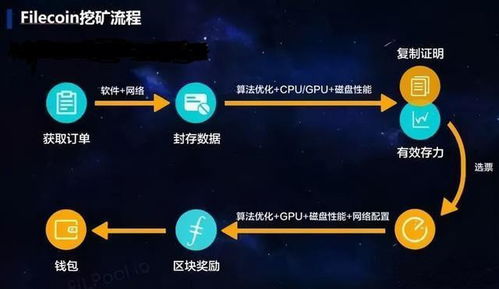As the digital landscape continues to evolve, Bitcoin mining stands at the forefront of a technological revolution, promising both immense rewards and unforeseen challenges. In an era where cryptocurrencies have transcended mere speculation to become integral to global finance, understanding the future profitability of Bitcoin mining is crucial. For companies specializing in mining machines and their hosting, this forecast isn’t just about numbers—it’s about navigating a dynamic ecosystem that includes Bitcoin (BTC), Ethereum (ETH), Dogecoin (DOG), and beyond. Picture a world where powerful mining rigs hum in vast data centers, churning out blocks that underpin decentralized economies. Yet, as we peer into the crystal ball of crypto futures, questions arise: Will rising energy costs erode profits, or will innovations in hardware and hosting solutions pave the way for sustainable gains?
The current state of Bitcoin mining profitability hinges on several key factors, from the ever-fluctuating price of BTC to the efficiency of mining hardware. Historically, miners have enjoyed windfalls during bull runs, with BTC’s value soaring to new heights, but these peaks are often followed by valleys that test resolve. For instance, the hash rate—the collective computational power dedicated to the Bitcoin network—has skyrocketed, making it harder for individual miners to compete without state-of-the-art equipment. This is where specialized mining machines come into play, devices engineered for optimal performance and energy efficiency. Companies offering these machines, along with secure hosting services, provide a lifeline for enthusiasts and professionals alike. Imagine rows of these beasts, miners and rigs working in unison, not just for BTC but potentially for ETH’s proof-of-stake evolution or even the whimsical DOG, each currency adding layers to the profitability puzzle. Yet, amidst this complexity, exchanges play a pivotal role, allowing miners to convert their rewards into fiat or other assets, amplifying the potential for diversified income streams.

Looking ahead, forecasts suggest a mixed bag for Bitcoin mining’s profitability, influenced by technological advancements and regulatory shifts. Experts predict that by 2025, improvements in ASIC miners—specialized hardware designed exclusively for crypto mining—could reduce operational costs by up to 30%, making even smaller-scale operations viable. However, the environmental backlash against energy-intensive mining might lead to stricter regulations, particularly in regions like the EU, where carbon footprints are under scrutiny. This is where mining farms shine, vast facilities that host thousands of machines in optimal conditions, often in areas with cheap electricity. For businesses in this space, offering hosting services means not only selling miners and rigs but also providing the infrastructure for ETH’s greener alternatives or DOG’s community-driven surges. The unpredictability adds a thrilling element; one day, a BTC halving event could halve rewards, and the next, a surge in DOG’s popularity might open new avenues. This burst of variability demands adaptability, with miners pivoting between currencies to maximize returns in an interconnected web of exchanges and blockchains.
Moreover, the rise of alternative cryptocurrencies like ETH and DOG introduces both competition and opportunity. While BTC remains the gold standard, ETH’s transition to proof-of-stake could siphon hashing power away from traditional mining, pushing profits toward staking models. On the flip side, DOG’s meme-fueled volatility has shown how quickly a currency can capture the market’s imagination, potentially offering higher short-term yields for those with flexible rigs. Hosting providers must innovate, perhaps by integrating multi-currency support into their services, allowing clients to switch between mining BTC, ETH, or DOG with ease. This diversity not only enriches the ecosystem but also mitigates risks; if BTC’s profitability dips due to network congestion or fee wars, miners can redirect efforts to more lucrative options. Envision a future where mining farms are smart ecosystems, using AI to forecast and adjust operations in real-time, turning what was once a gamble into a calculated strategy.
As we contemplate these forecasts, it’s essential to consider the broader implications for the industry. Profitability isn’t solely about hardware efficiency or hosting reliability; it’s intertwined with global events, from geopolitical tensions affecting energy prices to advancements in quantum computing that could threaten blockchain security. For newcomers, the barrier to entry—purchasing a miner or opting for hosted solutions—remains high, but the potential rewards are tantalizing. A single mining rig, properly managed, could yield substantial returns during a BTC bull run, while diversified portfolios including ETH and DOG hedge against downturns. Exchanges, as the gateways to liquidity, will continue to evolve, perhaps integrating decentralized finance (DeFi) elements that allow miners to leverage their assets creatively. In this vibrant tapestry, the future of Bitcoin mining emerges not as a straight line but as a series of ebbs and flows, demanding vigilance and innovation from all players.
In conclusion, the future of Bitcoin mining profitability paints a picture of cautious optimism, with forecasts pointing to sustained growth tempered by challenges. As companies dedicated to selling and hosting mining machines adapt to this landscape, they’ll find opportunities in the synergies between BTC, ETH, DOG, and other assets. Whether through cutting-edge rigs that minimize costs or expansive mining farms that scale operations, the key lies in embracing diversity and unpredictability. Ultimately, for those willing to navigate the waves, the rewards could be as boundless as the blockchain itself, securing a profitable horizon in the ever-expanding world of cryptocurrencies.

Leave a Reply